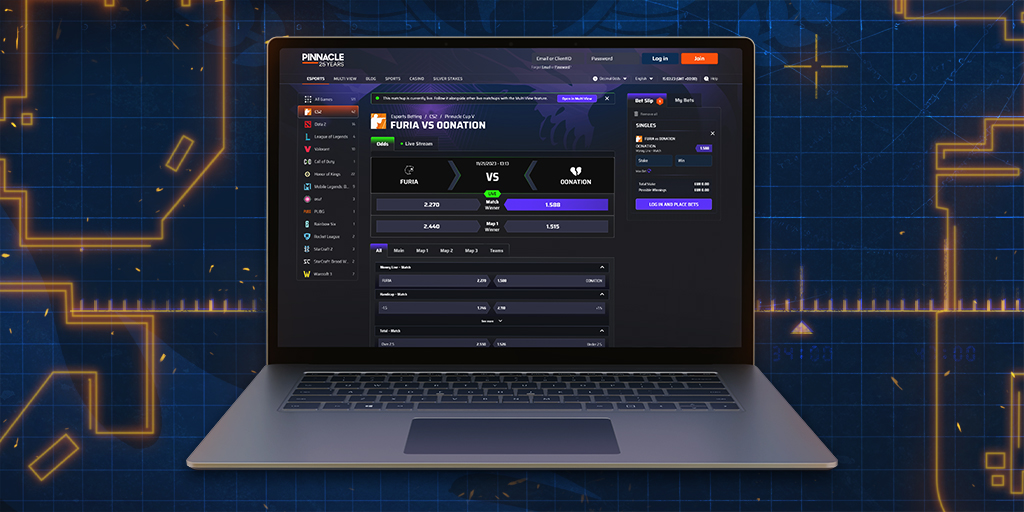Burtowy Insights
Your source for the latest news and insights.
Veto or Not to Veto: Navigating the CS2 Map Dilemma
Discover the ultimate guide to CS2 map decisions! Learn when to veto and when to embrace the challenge. Don’t miss out!
Understanding the CS2 Map Veto System: A Comprehensive Guide
The CS2 map veto system is an essential component of competitive matches in Counter-Strike 2, influencing the tactical dynamics and overall strategy of each game. Understanding how this system works can provide players and teams with a significant edge. The process begins with both teams having the opportunity to ban maps they are not comfortable playing on. Typically, each team will take turns to veto maps until a set number of maps remain, and ultimately, one map is selected for the match. This strategic elimination process allows teams to tailor the match environment to their strengths and exploit their opponents' weaknesses.
To effectively utilize the CS2 map veto system, teams should consider several factors, including map familiarity, historical performance, and opponent tendencies. It's essential for teams to maintain a comprehensive understanding of each map's dynamics, including choke points, bomb sites, and common strategies employed by rival teams. By analyzing past matches and using data-driven insights, teams can make informed decisions during the veto phase, maximizing their chances of success. Overall, mastering the map veto process not only enhances a team's chances of victory but also contributes to a deeper appreciation of the game's competitive landscape.

Counter-Strike, a staple in the world of competitive gaming, has evolved over the years, captivating players with its strategic gameplay and team dynamics. Players engage in thrilling rounds of intense firefights, and many wonder how long is a cs2 match. The excitement of outsmarting opponents and executing tactical maneuvers makes each match a unique experience.
Top Strategies for Vetoing Maps in CS2: What You Need to Know
Vetoing maps in CS2 is a crucial strategy that can significantly impact the outcome of your matches. Understanding the top strategies for vetoing maps involves not just knowledge of your own team's strengths and weaknesses, but also a keen awareness of your opponent's gameplay style. Begin by analyzing the maps that your team excels at, as well as those that your adversaries tend to struggle on. For instance, if you know your team performs well on Dust II but your opponents have a history of poor performance on Mirage, it’s wise to prioritize these maps during the veto process. This strategic approach can help you gain a competitive edge right from the start.
Another effective strategy is to stay flexible and adaptable during the veto phase. While having a plan is essential, being able to pivot based on your opponent's decisions can prove invaluable. If your rival team unexpectedly bans a map you were counting on, it’s crucial to have a backup strategy ready. In these cases, communicating with your team becomes vital—discuss alternative maps that you feel comfortable with and can perform well on. A well-coordinated veto process where all team members are involved can lead to better outcomes and improved synergy during the match. Embrace these tactics to enhance your map vetoing and overall gameplay in CS2.
Should You Veto or Play? Analyzing the Pros and Cons of CS2 Maps
When it comes to CS2 maps, players often face the critical decision of whether to veto or play a particular map. This choice can significantly impact your gaming experience and your team’s overall performance. Pros of vetoing a map include avoiding maps that you are not comfortable with, which can lead to better individual and team performance. Additionally, by removing a map you believe your opponents excel on, you can level the playing field, making strategic gameplay easier to achieve. However, this decision can backfire; cons of vetoing may include eliminating a map that your team is well-prepared for, reducing the variety in gameplay, and possibly frustrating teammates who may want to play their favored maps.
On the other hand, playing a map you are uncertain about can have its advantages as well. For instance, it can help you develop versatility and adaptability, enabling you to become a more well-rounded player. Embracing unfamiliar maps may also provide unexpected opportunities for teamwork and collaboration, fostering a stronger bond among team members. Yet, it’s essential to consider the cons of playing a map you dislike, such as potentially lower confidence levels, increased likelihood of poor performance, and the risk of setting your team up for failure against a more skilled opponent. Ultimately, the choice between vetoing and playing hinges on your team’s strengths and weaknesses and the strategic implications of the maps in question.